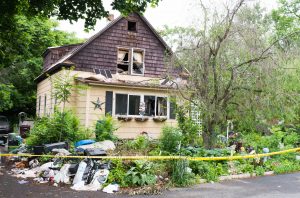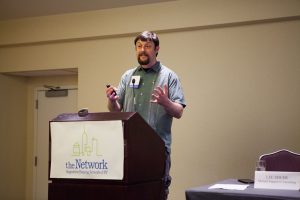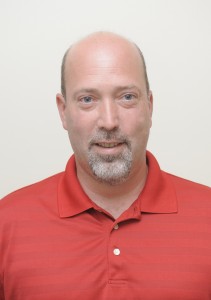WESTFIELD—The term “hoarding” has been a more regular part of conversations in the city over the past month-plus due to the deaths of two residents in a fire, but it may not be clear what hoarding really is.
First, hoarding is a disorder, according to Lee Shuer, certified peer specialist at Mutual Support Consulting in Easthampton. Shuer has worked to help treat those with hoarding disorder, including writing pieces and developing a workshop for its treatment, along with his wife, Bec Belofsky Shuer. And since it is a disorder, Shuer said that it is important that it is understood in the public like depression, bipolar disorder or anxiety disorder are understood.
“We are working on dispelling the myth that having too much stuff is a hoarding disorder and working to get away from people being referred to as hoarders,” Shuer said.
According to Belofsky Shuer, hoarding disorder is a diagnosable disorder according to the Diagnostic and Statistical Manual of Mental Disorders, Fifth Edition, also known as DSM-5. This fact however, may not be known, she said.
“It became a separate diagnosis in 2013 in DSM-5,” she said. “A lot of clinicians, a lot of people in the field don’t know that.”
Shuer said that while acquiring items is one step, there is more to hoarding disorder than just that.
“Hoarding disorder is really about the acquisition of and holding onto a large number of items regardless of their value,” he said.
These items may begin to overwhelm living areas, Shuer said, and may be held onto “because of the associated distress of letting them go.” In addition, these actions and items must also be impacting the person’s life, he said, whether it’s health, safety, their job or relationships.
“Looking at those factors, those are the primary criteria for diagnosis,” he said.
However, diagnosis must come through a licensed clinician, Shuer said, and this is important when discussing the fatal fire on Park Street last month. The deaths were partially associated with the amount of items in the home, which was called a “hoarding situation” by some officials.
“Nobody in that home was diagnosed with hoarding disorder,” he said. “The people involved weren’t diagnosed with hoarding disorder, but there was clutter.”
For treatment, Shuer said that the most effective option is cognitive-behavioral therapy. He said that this could be through a clinician, or through a program that he helped co-develop called Buried Treasures Workshop, which he said is available through Mutual Support Consulting.
“People with this experience can run these groups and have similar outcomes to clinicians,” Shuer claimed of the latter option. “I co-developed the facilitator guide with one of the co-creators.”
Of course, in order to gain treatment there must be an acknowledgement of a problem, as well as overcoming social stigmas of mental health disorders and wanting to receive help.
Also, according to Joe Rouse, public health director for Westfield, hoarding disorder may come with an additional stigma that may preclude people from seeking help.
“Sometimes people use the word hoarding and people think it is disgusting and it’s not.” Rouse said. “Some people will just collect items.”
Rouse said that while there are cases where the action of hoarding may include unsanitary items like trash, certain recyclables, food or animals, this is not generally the case.
“Most of the hoarding we see is not the sanitary stuff, just an accumulation of a lot of material,” he said.
There are times when these issues of accumulation may come to the city’s attention, but many do not.
“They tend to fly under the radar,” he said. “In any given year in the 20 years I’ve been here, we are generally dealing with one or two cases a year.”
Rouse said that those who may suffer from hoarding disorder or some other accumulation problem may not seek assistance due to the potential code enforcement issues that could come from the city, which may be the reason behind the lack of acknowledged cases.
“It’s really hard because people don’t necessarily want to get the code enforcement agencies involved,” he said.
However, according to Rouse, if there is an issue with accumulation he wants people to know that the city’s health department is not trying to penalize anyone. Instead, they are looking to maintain the safety of the residents, including those who may have a hoarding disorder.
“My pledge right now is to say, if you have family members or neighbor and you think they need assistance, we don’t have to go in and enforce the sanitary code right away if we can enforce compliance,” Rouse said. “Our primary goal is to connect people with the resources to get everything under control.”
For more information, Rouse said that you can call the city’s health department at (413)572-6210. Also, you can go to http://mutual-support.com/contact for more information on Mutual Support Consulting.





